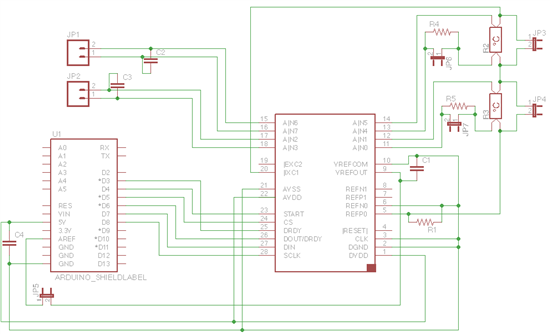Hi,
First of all, I'm a computer scientist with no electrical engineering background so I'm likely to make mistakes in my design and reasoning.
I have the same problem as Eran. The measurement error depends on Rbias, a precision resistor costs as much as the ADS1248 and it introduces another error. I used the following schema to measure an RTD without using Rbias.

Internal reference 2.048V, IDAC set to 1.5mA , PT1000 RT, PGA=1
I tested this with a 1KOhm 1% resistor and it seems to work well.
1K Ohm (0˚C) corresponds to a reading of 1.5V, max would be 1365Ohm (91˚C).
I took 1000 samples and they got a st dev of 0.02 Ohm or 0.005˚C.
I'd like to improve on this but don't really know how. I think the main problem is that I don't use the full range available, only 1.5-2.048V and that I can't use the PGA in this configuration.
All comments and ideas are very welcome!
best regards,
Beau


